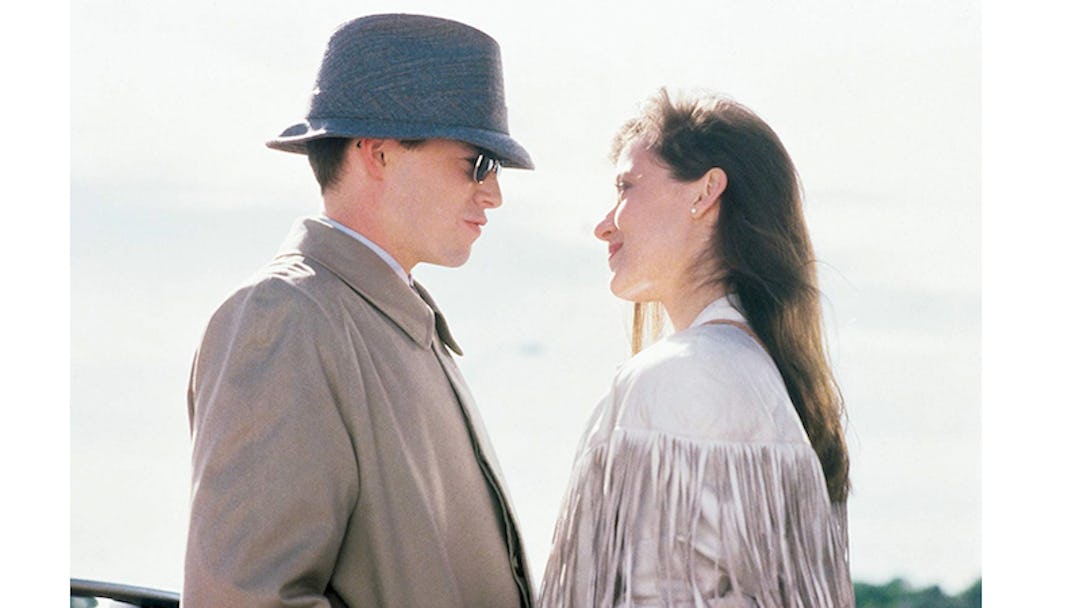Happy birthday, Ferris Bueller’s Day Off! John Hughes’ iconic coming-of-age story, “an ode to the wisdom of youth,” has come a long way since the days of skipping school. In May, the movie returned to cinemas nationwide for a 30th-anniversary event. And today marks the film’s original 1986 release. Roger Ebert called the film “one of the most innocent movies in a long time, a sweet, warm-hearted comedy.” While we’re looking back on all the best parts of Bueller and the gang, here are 15 facts you might not know about the teenage wise-guy tale.
Hughes created the character of Ferris with Matthew Broderick in mind. “Certain guys would have played Ferris and you would have thought, ‘Where’s my wallet?'” Hughes said of the role. “‘I had to have that look. That charm had to come through. Jimmy Stewart could have played Ferris at 15. I needed Matthew.'”
Molly Ringwald almost played the role of Sloane Peterson, but according to the actress Hughes wouldn’t let her take the part. “John wouldn’t let me do it,” the actress revealed. “He said that the part wasn’t big enough for me.”
Alan Ruck’s Cameron Frye was based on Hughes’ real-life friend in high school. “He was sort of a lost person,” Hughes said of his former pal. “His family neglected him, so he took that as license to really pamper himself. When he was legitimately sick, he actually felt good, because it was difficult and tiring to have to invent diseases but when he actually had something, he was relaxed.”
Cindy Pickett and Lyman Ward, the actors who played Ferris’ parents, got legit real-life married after making the movie.
Hughes’ love of Chicago, evident in the film, is genuine. “Chicago is what I am,” said Hughes in 2007. “A lot of Ferris is sort of my love letter to the city. And the more people who get upset with the fact that I film there, the more I’ll make sure that’s exactly where I film. It’s funny — nobody ever says anything to Woody Allen about always filming in New York. America has this great reverence for New York. I look at it as this decaying horror pit. So let the people in Chicago enjoy Ferris Bueller.”
The address of Ferris’ house is the same address of Hughes’ childhood home.
Cameron’s house was designed by architects A. James Speyer and David Haid in 1953.
John Hughes on the art museum scene, which was filmed at the Art Institute of Chicago:
[It was] a self-indulgent scene of mine—which was a place of refuge for me, I went there quite a bit, I loved it. I knew all the paintings, the building. This was a chance for me to go back into this building and show the paintings that were my favorite.
The rare 1961 Ferrari wasn’t real. Three replicas were created using a fiberglass MG chassis.
Actor Ben Stein has a degree in economics. His economics lecture in the film is totally unscripted. He was giving a mock lecture to the cast one day. “I was just going to do it off camera, but the student extras laughed so hard when they heard my voice that [Hughes] said do it on camera, improvise, something you know a lot about,” the actor told Showbiz Tonight. “When I gave the lecture about supply side economics, I thought they were applauding. Everybody on the set applauded. I thought they were applauding because they had learned something about supply side economics. But they were applauding because they thought I was boring.”
Dirty Dancing choreographer Kenny Ortega created the moves for Broderick’s parade scene. Some people dancing in the scene, including the construction workers and window washers, just happened to be in the area while the movie was being shot.
John Hughes never released a soundtrack for the film, but he did send a limited-release vinyl to people on his fan mailing list:
The only official soundtrack that Ferris Bueller’s Day Off ever had was for the mailing list. A&M was very angry with me over that; they begged me to put one out, but I thought “who’d want all of these songs?” I mean, would kids want “Danke Schoen” and “Oh Yeah” on the same record? They probably already had “Twist and Shout”, or their parents did, and to put all of those together with the more contemporary stuff, like the (English) Beat—I just didn’t think anybody would like it. But I did put together a seven-inch of the two songs I owned the rights to—”Beat City” on one side, and… I forget, one of the other English bands on the soundtrack… and sent that to the mailing list. By ’86, ’87, it was costing us $30 a piece to mail out 100,000 packages. But it was a labor of love.
New York Magazine critic David Denby called the film one of the worst of the year, saying it was a “nauseating distillation of the slack, greedy side of Reaganism.”
Regarding a sequel, Hughes said: “We thought about a sequel to Ferris Bueller, where he’d be in college or at his first job, and the same kind of things would happen again. But neither of us found a very exciting hook to that. The movie is about a singular time in your life.”
Hughes was not involved with a 1990 TV series called Ferris Bueller for NBC, starring Charlie Schlatter as Ferris Bueller, Jennifer Aniston as Jeanie Bueller, and Ami Dolenz as Sloane Peterson. It was a prequel of sorts to the film, but got cancelled after 13 episodes.
